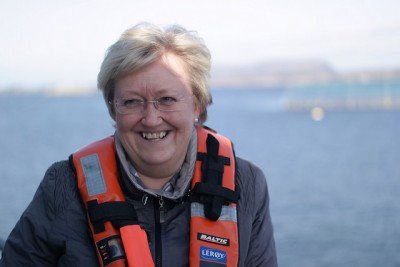Norway’s major salmon farming companies Marine Harvest and Cermaq saw their shares jump after the government announced its new strategy for their industry, while critics called it an environmental “bluff.” The government won’t grant new farming concessions for at least another three years but will increase the number of salmon allowed in existing farms by 5 percent.

The government’s new strategy for the fish-farming industry known as oppdrett in Norway also involves stricter limits on how much salmon lice can be allowed on the fish. Fisheries Minister Elisabeth Aspaker claimed she was imposing both a “carrot and a stick” on the industry, but environmentalists were disappointed.
“Her proposal totally defies both research and common sense,” said Arnodd Håpnes of Naturvernforbundet (Friends of the Earth Norway). “There’s already way too much salmon lice, and this will increase it.”
The nagging problem of salmon lice poses a serious threat to the wild salmon in Norway’s rivers, since it’s spread by salmon that escape from fish-farming facilities that dot Norway’s fjords and coastal areas. Sea trout is also at risk, as such wild fish are all over the world where fish farming is a major industry.
Aspaker defends her strategy for both boosting the salmon farming industry and controlling lice. She stressed that while the government is increasing capacity allowed for fish farming, it is also imposing much stricter environmental regulations on farm operations. The increase in the number of salmon allowed in farmers’ fish-farming pens called merder can boost production by as much as 60,000 tons. The limit for allowable lice, however, will fall from 0.5 lice per fish to 0.1. Control mechanisms will be boosted through another NOK 10 million in funding, and only two medical treatments to combat lice will be allowed per production cycle.
“All the environmental organizations are skeptical towards this,” maintained Karoline Andaur of WWF Norge. She told newspaper Dagsavisen that fish farming already has “unacceptable effects” on the environment and while the new lice limits are welcome, the ability for existing fish-farming operations to boost capacity is not. Håpnes called Aspaker’s plan “an environmental bluff.”
Wild salmon disappearing
Meanwhile, sports fishing enthusiasts are complaining in the midst of their wild salmon fishing season that their catches are miserable. “We used to be able to catch several salmon every day,” Knut Nils Kvisgaard told newspaper Dagens Næringsliv (DN), while fishing in the Orkla River. He and three friends spent most of last week in the river and barely saw any signs of life. They last caught salmon in the Orkla River three years ago.
Torbjørn Forseth, of the state institute for nature research (Norsk institutt for naturforskning) called the situation “dramatic,” with great consequences for the salmon fishing industry. “We’re talking about the heart of ‘Salmon Norway,’ where salmon fishing is the greatest economic generator along the Orkla and Gaula rivers,” Forseth told DN. “We’re talking about 20,000 fishers coming here every years and spending more than NOK 200 million. It’s clearly dramatic when the catchable harvest almost disappears from one year to the next.”
Salmon farmers were also unhappy about the government’s new strategy for fighting the lice that can kill off wild salmon, even though share prices in two major producers rose. Many claim that it will be impossible to keep lice down at the new lower levels with only two doses of antibiotics during the production cycle. One grower told DN he therefore expects no increase in production, that salmon prices will rise and lice will still be a problem.
newsinenglish.no/Nina Berglund

